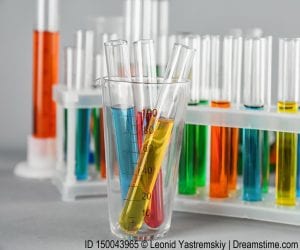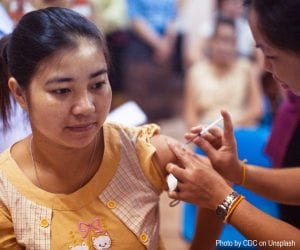This fall we all have the same goal – stay healthy. For students, that process starts with understanding germs, and how a virus like COVID-19 can quickly spread through populations.
We’ve compiled four lesson plans for different grade bands that teach students how to stay healthy, and why it’s important to follow the CDC guidelines. Although these lesson plans were not authored by Population Education, we want to share important resources that teachers will find useful as the world continues to grapple with the pandemic.
All four lessons below can be completed at home with limited materials, and are ideal for distance learning. Use this teachable moment to help ensure your students, their families, and their communities stay healthy.
Grades K-4: Soapy Solutions Elementary Lab
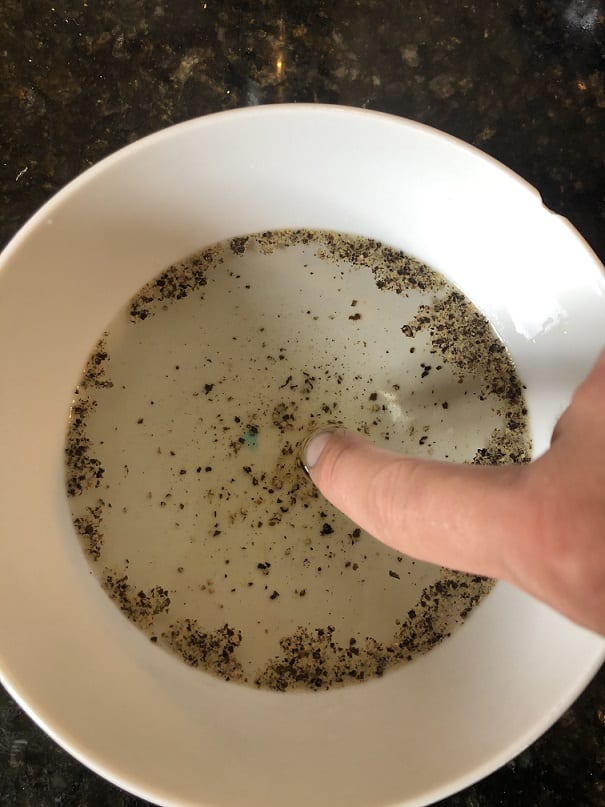
Kids are told over and over again to wash their hands, yet, that instruction is not followed frequently enough. Educators know that if you want to get results, you need to teach students WHY they should follow an instruction, rather than the old “because I said so.” This eye-catching demonstration on the effects of soap and water could not be easier for kids to understand, whether they’re in the classroom, or following along at home.
Materials:
-
- Small bowl of water
- Pepper
- Liquid soap
- Toothpick (optional)
In this very simple lesson demonstration, students should begin filling a small bowl with water and evenly adding “germs,” represented by pepper flakes, to the surface of the water. Ask students to predict what they think will happen when they stick their toothpick into the bowl of water with the germs (using their pointer finger instead of a toothpick also works). Then, students place their toothpick in the center of the bowl for 3 seconds, remove it, and record or share what happened. The “germs” should have quickly collected on the toothpick. Now, have students cover the toothpick in liquid soap. Ask students to hypothesize what will happen given the changed variable, and then dip their soapy toothpick into the water. They will watch in amazement as the pepper immediately darts away from the toothpick, showing the power soap has on destroying germs!
There are many different ways to debrief this activity depending on your grade level. Most importantly, students of all ages will be able to see exactly what’s happening when they wash their hands. For more, show your students this episode of PBS KIDS’ Sid the Science Kid on health science, available free on YouTube.
Grades 3-5: Virulent Viruses Activity
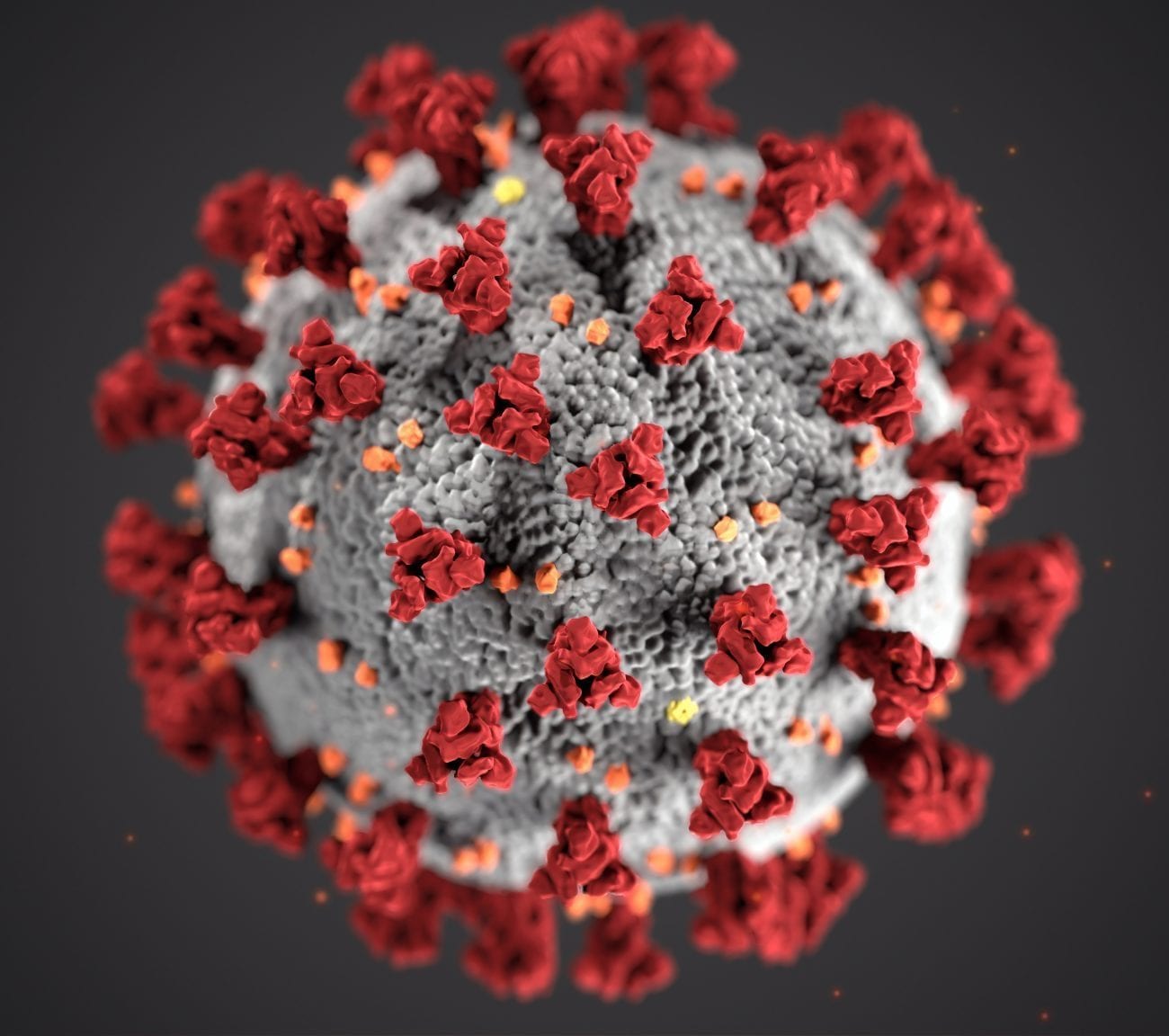
Understanding Coronavirus begins with understanding what a virus is and how it works. The NGSS-aligned lesson plan Meet the Germs, from The Vaccine Makers Project, teaches upper elementary students the difference between bacteria and viruses, and how the latter uses the cells in our bodies to replicate itself, often causing us to become sick. The only thing students need to complete this lesson is internet access, so it’s a great activity for blended learning.
Materials:
-
- Internet access
First, students will learn about Martinus Beijerinck, a Dutch virologist who was one of the first people to discover the complexities of viruses. They will then research different types of diseases, and classify them as bacteria or viruses. Students will also watch two short videos demonstrating how viruses attach to human cells and replicate themselves.
During their research, students take detailed notes on the differences between viruses and bacteria, and what humans have invented to fight the different diseases. A simple T-chart works best for younger students. After students complete their research, they share their findings in small groups, or with the whole class. This lesson plan also includes a formative assessment to check for understanding.
With the added knowledge about how humans have found cures for other diseases, including many different viruses, students will understand the importance of discovering a vaccine.
Grades 6-8: Exploding Equations Activity
COVID-19 has given the world a masterclass in exponential growth. In this middle school math lesson from Mathalicious, students use exponential growth equations and logarithms to model how viruses spread through a population. This timely lesson can be completed remotely and will answer the frequently asked math class question “why do I need to learn this?”
Materials:
-
- Graphing calculator
- Internet access
- Student worksheet
First, engage students with a short video clip about the 2012 Ebola outbreak in Uganda, and give students time to activate prior knowledge about different diseases and how they spread. Next, using either the provided worksheet and a graphing calculator or the online simulator, students determine how long it would take for a virus to spread through a small town, and predict how a virus could spread through the entire global population if with an infection rate of 1. Students then explore what happens if the infection rate rises above 1. For an additional real-world component, ask your students to research the Coronavirus infection rates in your state or county.
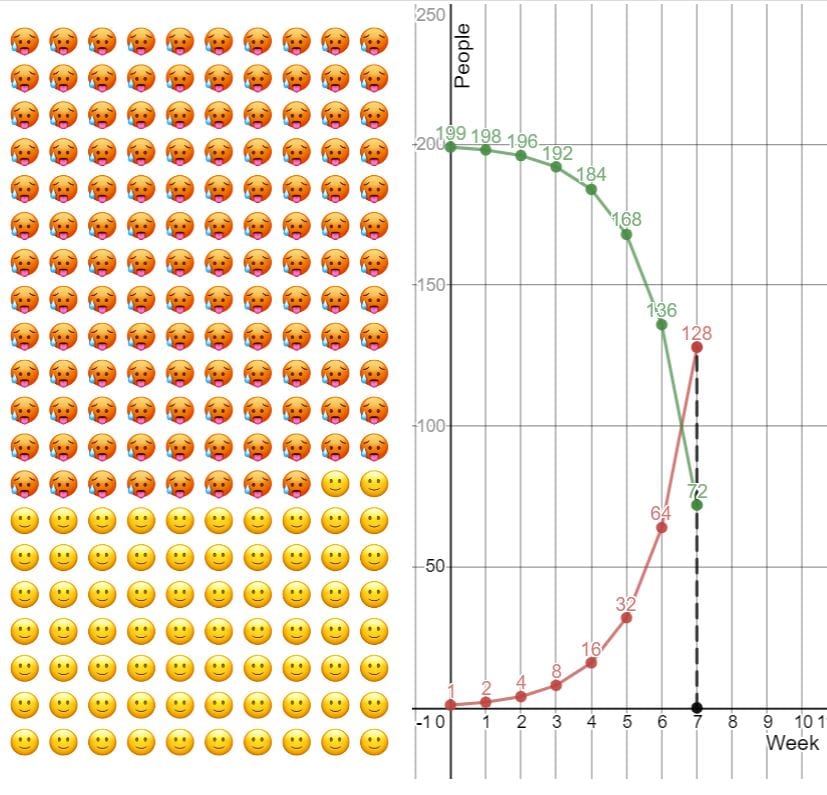
Screenshot of a model showing the toll an unknown virus with an infection rate of R1 has taken on a population of 200 people. Model built at Mathalicious.com.
Once students have completed their calculations, facilitate a discussion on what they think we can do to slow the spread of different diseases. Students will likely come up with solutions that we are seeing across the world, like social distancing and quarantining those who have contracted a virus.
Grades 9-12: Simulation Science for High Schoolers
Turn your students into virologists when they play out various virus simulations in this NGSS-aligned science and math lesson. Students use a free online simulator to see how diseases spread through a population. Though this activity was written before the emergence of COVID-19, it will show your high school students how valuable measures like social distancing can quell the spread of a virus while they learn in the safety of their homes.
Materials:
-
- Internet access
- Curb the Epidemic! worksheet
Before beginning the lesson, allow your students time to explore the simulator tool and experiment with the different variables: population density, population mixing, and percent vaccinated. Next, give students input data to begin their simulations. Challenge the class to minimize the spread of the disease by changing the variables, one at a time. Students should record each trial on their worksheet. Once students run ten trials, discuss what they found to be the most effective solutions. Then, dig deeper by asking students if they believe their solutions are likely to play out the same way in the real world. For example, does everyone follow social distancing measures? What happens when a vaccine is not available?

Screenshot of an artificial disease spreading through a population with medium density and mixing. This model was built using an interactive simulator from Leearner.org.
This lesson plan will help students understand why some government officials make the tough decisions we see on the news like travel restrictions and social distance enforcement, and reinforce the importance of following the guideline of public health experts to slow the spread of COVID-19.
Understanding Disease Spread Helps Keep Students Safe
All four of these engaging activities are designed to help students understand disease, and learn about different methods to keep ourselves and our communities safe and healthy. However, it’s possible that many students are anxious and scared about the current public health crisis, and may have lost someone close to them. It is more important than ever that teachers educate in a respectful manner so that students feel supported in this challenging time.
Image credits: Soap and pepper experiment (Pete Bailey); Coronavirus virus CDC (CDC on Unsplash); Exploding Equations image (Screenshot of model from Mathalicious.com); Simulation Science image (Screenshot of model from Learner.org)



